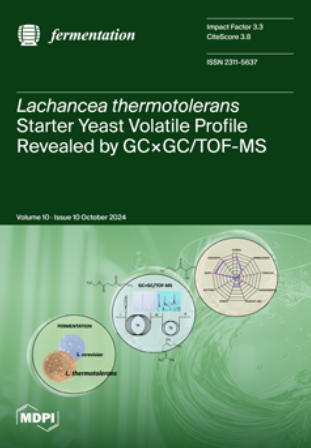Research on the Promotion of Sludge Anaerobic Fermentation with Sodium Citrate under Low Concentrations of Polyaluminum Chloride
IF 3.3
3区 农林科学
Q2 BIOTECHNOLOGY & APPLIED MICROBIOLOGY
引用次数: 0
Abstract
Polyaluminum chloride (PAC) is used widely and increasingly in wastewater treatment plants, resulting in its inevitably high production in sludge. Previous studies have indicated that the production of short-chain fatty acids (SCFAs) is inhibited by the existence of PAC in sludge anaerobic fermentation, so it is necessary to study how to promote sludge anaerobic fermentation under low concentrations of PAC. In this study, sodium citrate (SC) was first used to improve the efficiency of anaerobic fermentation under low concentrations of PAC. The results showed that the production of SCFAs increased with SC, especially when the ratio of PAC to SC was 1:2, and the maximum production of SCFAs reached 2890 mg/L, which is 2.5 times more than when PAC only exists. The mechanism studies showed that SC could remove the Al3+ in the sludge floc, which led to deflocculation of the sludge floc, accelerated the destruction of extracellular polymers (EPS), and released soluble substances in the sludge. At the same time, the key enzymes that were bound and hidden originally in the sludge were also released, which promoted the further degradation of organic matter and shortened the anaerobic fermentation period. However, the higher concentration of SC was not conducive to sludge dehydration. Therefore, the optimal distribution ratio of PAC to SC should be 1:1. This study provides a new idea for the research and practical application of sludge anaerobic fermentation.低浓度聚合氯化铝下柠檬酸钠促进污泥厌氧发酵的研究
聚合氯化铝(PAC)在污水处理厂的应用越来越广泛,必然导致其在污泥中的高产量。以往的研究表明,短链脂肪酸(SCFAs)的产生受到污泥厌氧发酵中PAC的抑制,因此有必要研究如何在低浓度PAC下促进污泥厌氧发酵。本研究首先采用柠檬酸钠(SC)来提高低浓度PAC下厌氧发酵的效率,结果表明,SCFAs的产生随着SC的增加而增加;特别是当PAC与SC的比例为1:2时,scfa的最大产量达到2890 mg/L,是单独存在PAC时的2.5倍。机理研究表明,SC能去除污泥絮团中的Al3+,导致污泥絮团脱絮,加速胞外聚合物(EPS)的破坏,并释放污泥中的可溶性物质。同时,原本被束缚和隐藏在污泥中的关键酶也得到了释放,促进了有机物的进一步降解,缩短了厌氧发酵周期。但高浓度的SC不利于污泥脱水。因此,PAC与SC的最佳分配比例应为1:1。本研究为污泥厌氧发酵的研究和实际应用提供了新的思路。
本文章由计算机程序翻译,如有差异,请以英文原文为准。
求助全文
约1分钟内获得全文
求助全文
来源期刊

Fermentation-Basel
BIOTECHNOLOGY & APPLIED MICROBIOLOGY-
CiteScore
3.80
自引率
18.90%
发文量
594
审稿时长
7 weeks
期刊介绍:
Fermentation-Basel is an international open access journal published by MDPI, focusing on fermentation-related research, including new and emerging products, processes and technologies, such as biopharmaceuticals and biotech drugs. The journal enjoys a good reputation in the academic community and provides a high-impact forum for researchers in the field of bioengineering and applied microbiology.
 求助内容:
求助内容: 应助结果提醒方式:
应助结果提醒方式:


